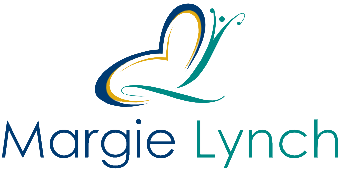Why do I love April? It’s my birth month and my birthday is the perfect day to celebrate my incredible life.
This year, I am celebrating another year of life. Last year on my birthday, I ended up in emergency surgery due to a life-threatening event. I spent the first 11 days of my new year in the hospital with plenty of time to reflect on how precious life is and how I want to spend this one precious life I have. So I’m celebrating my life well-lived in the past year and making plans for another precious year. I’ve experienced death of many loved ones, so I know it’s important to make the most out of every day, but when you’re faced with your own mortality, it becomes abundantly clear that life can be short and you never know when the unexpected can happen.
My advice: Do the work to plan your life with intention.
In preparation of my new year, I celebrate the last year of my life, my accomplishments, the challenges I was able to overcome, my wins, and what I learned from my not so good days. I reflect on the possibilities for my new year, and I do the work to set meaningful intentions and goals.
Why January resolutions don’t work for me
I don’t make new year resolutions in January—and science backs up why they often fail. Research shows that nearly 80% of traditional resolutions collapse by February.
Why? Most resolutions come from a place of “should” rather than authentic desire. They’re typically too vague (“exercise more”), lack proper planning, and don’t account for the reality of our existing habits and schedules.
Instead, I focus on my birthday as my personal new year and set meaningful intentions and goals. This creates a natural reflection point tied to my own journey rather than an arbitrary calendar date.
I create a word for the year as a way to remind myself of my intention. This year my word is Adventure. I want to experience new adventures that align with my goals for wellness, relationships, meaningful work, and fun!
Designing Your Life with Intention: My Eight-Step Framework
“The best way to predict your future is to create it.” – Abraham Lincoln
Why Most People Never Achieve Their Dreams
Have you ever noticed how some people seem to move through life with clarity and purpose, while others appear to drift without direction? The difference often isn’t luck or privilege—it’s having a deliberate life plan.
In our fast-paced world, we’re experts at responding to urgent matters, yet we rarely dedicate time to what truly matters in the long run: designing our ideal lives with intention.
Today, I’m sharing a framework that has transformed my life as well as my clients’ lives and could change yours too.
My Eight-Step Life Design Framework
Step 1: Why you need a Life Plan
Most people spend more time planning their vacations than planning their lives. A life plan creates clarity, helps you make aligned decisions, and prevents you from drifting through your most precious years. Without a plan, you risk living by default rather than by design.
Step 2: Evaluate what’s most important
Take inventory of your life areas: career, relationships, health, finances, personal growth, and contribution. Which areas need the most attention? Where are you thriving, and where are you merely surviving? Honest assessment creates a foundation for meaningful change.
Step 3: Identify your values
Your values are your internal compass. When your actions align with your core values, you experience fulfillment. When they don’t, you feel internal conflict. Take time to define your top 5-7 values and ask yourself: “Is my current life honoring these values?”
Step 4: Identify your Strengths
Understanding your natural talents and developed skills creates a path of least resistance toward your goals. Research consistently shows that people who work from their strengths feel more engaged and accomplish more with less effort.
Start by reflecting on activities where you lose track of time, receive consistent positive feedback, or learn quickly. These are clues to your innate strengths. Consider taking an evidence-based assessment like CliftonStrengths or VIA Character Strengths to provide objective insights.
Remember: building your life around your strengths doesn’t mean ignoring weaknesses—it means strategically applying your natural talents while finding support systems for areas where you struggle.
Step 5: Visualize your future
Olympic athletes use visualization because it works. Create a detailed mental picture of your ideal life 3, 5, or 10 years from now. How do you spend your days? Who surrounds you? What have you accomplished? The clearer this vision, the more powerful its pull.
Step 6: Name your intentions
Transform vague aspirations into clear intentions. Instead of “I want to be healthier,” try “I intend to prioritize my wellbeing by exercising regularly and preparing nutritious meals.” Create SMART goals that align with your intentions. Specific intentions and goals create accountability.
Step 7: Develop your plan
Break down your intentions into actionable steps with timelines. A dream without a deadline remains a wish. Your plan should include short-term milestones that build toward your larger vision.
Step 8: Establish habits & goals
Your daily habits determine your destiny. Identify the routines that will move you toward your vision and the ones that pull you away. Small, consistent actions compound over time into remarkable results.
Step 9: Track your progress
What gets measured gets improved. Implement a regular review system—weekly check-ins, monthly assessments, and quarterly deep dives. This isn’t about perfection but progress and course correction when needed.
Your Life Deserves a Blueprint
Think about it: We wouldn’t build a house without blueprints, start a business without a plan, or even take a road trip without a map. Yet many of us approach life—our most important project—without clear direction.
This week’s challenge
Block time on your calendar for Step 1 and Step 2 of this framework. Begin evaluating what truly matters to you and why having a life plan is essential for your future.
What area of your life would benefit most from intentional planning? I’d love to hear your thoughts in the comments.
#LifeDesign #IntentionalLiving #PersonalDevelopment #LifePlan #PurposefulLiving.


 Copyright ©2025 Margie Lynch. All Rights Reserved
Copyright ©2025 Margie Lynch. All Rights Reserved